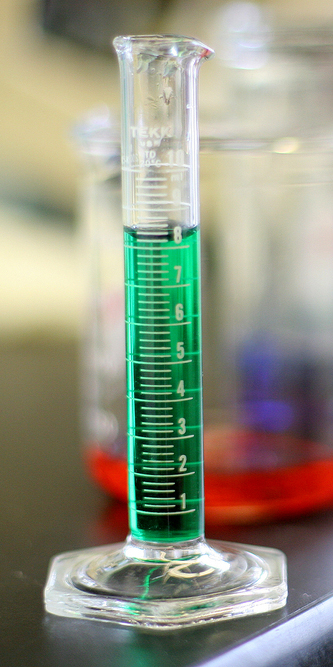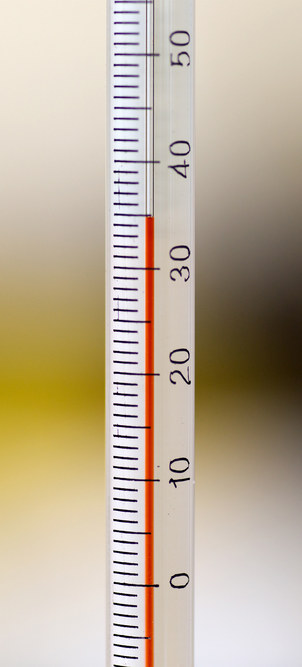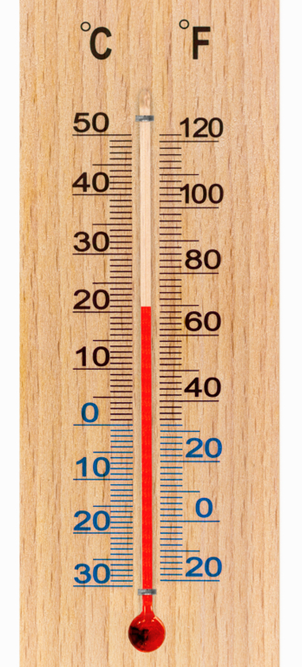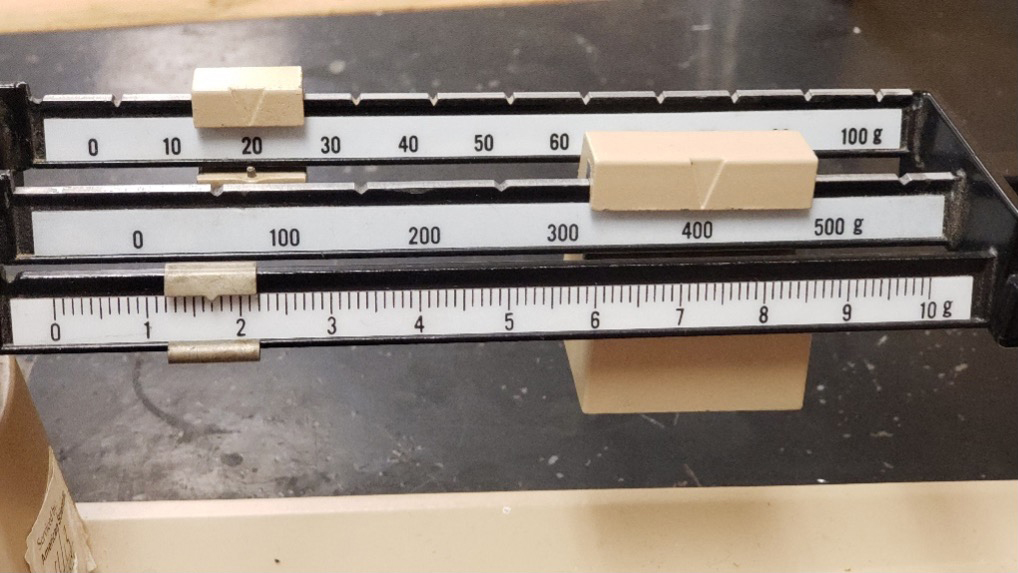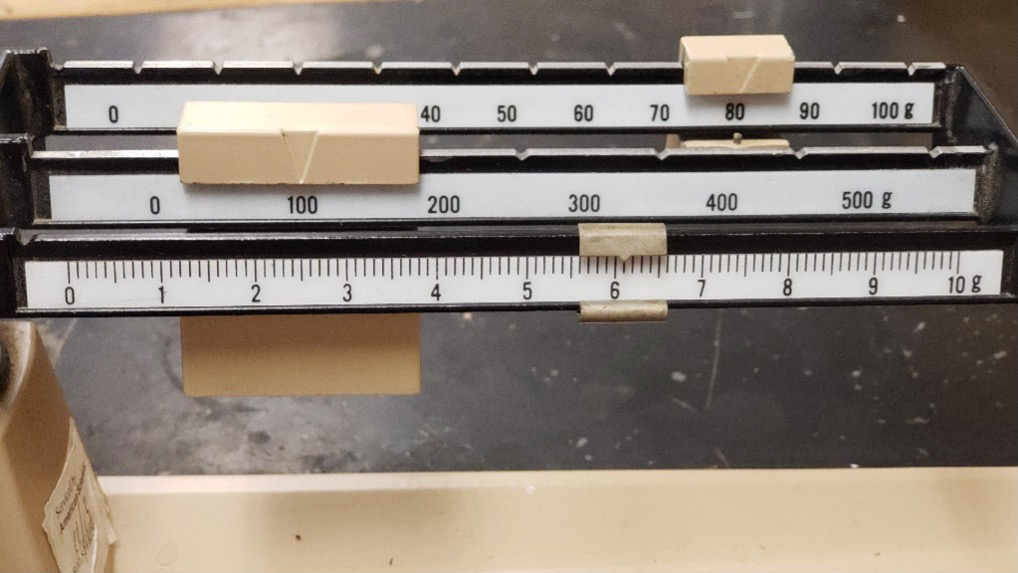When you take measurements in physics, you need to consider the precision and the accuracy of the measurements.
Accuracy is the correctness of a measurement, or how close it is to the accepted value.
Errors in accuracy can be due to human error, instrument error, or method error. These errors are generally ones that can be avoided or fixed.
Precision refers to the exactness of a measurement.
The precision is often determined by the limitations of the measuring instrument.
In this activity, you will measure length, volume, temperature, mass, and weight with accuracy and precision.
Before you begin, click the Word or PDF link below to download your assignment worksheet. Then, read through the tabs below for the instructions. When you have completed the lab and the assignment, submit your worksheet to your teacher.
| Word |
The activity consists of the parts shown below. Read and follow the steps on each tab to complete the activity. Be sure to perform the measurements and record them on your assignment worksheet.
Measuring Length
Using a Ruler
Measuring Volume Using a Graduated Cylinder
Measuring Temperature Using a Thermometer
Measuring Mass Using a Triple-Beam Balance
Measuring Weight
Using a Spring Scale
Length measurements are usually made with a ruler.
When you are making any kind of measurement, you need to be aware of what the scale is and what each division represents. Typically, rulers have main divisions that mark the centimeters and then lines between those divisions, which represent 1/10 of a centimeter, which is a millimeter.
When taking measurements, you should report all the digits that you can directly measure and one that you estimate. Using this ruler, your measurements should be reported to the hundredth of a centimeter. The measurer can estimate the hundredths digit because of the certainty of the tenths digit, indicated by the small lines.

Look at this example.

The length in centimeters of this line segment is 2.31 cm; however, acceptable answers are between 2.30 cm and 2.40 cm with two digits after the decimal point.
Use the metric ruler given to measure the length of the object on each slide of the slideshow below. Record the length and the number of significant figures for each measurement on the data table on Question 1 of your assignment worksheet.
Pencil

Drag the ruler to measure the object Dragonfly

Drag the ruler to measure the object Leaf

Drag the ruler to measure the object |
The volume of a liquid is measured in milliliters (mL) with a graduated cylinder.
Graduated cylinders come in many different sizes, and their lines of measure (called graduations) can have different values, depending on the size of the cylinder.
The liquid line on a graduated cylinder is often curved due to the physical properties of water. This curved line is called a meniscus. The location of the lowest point of the meniscus is used to determine the volume in a graduated cylinder. For example:


This cylinder contains marks for every 1 milliliter. Since the bottom of the meniscus is above the mark for 18 but below the mark for 19, the volume will be between 18.0 and 19.0. The volume would be measured as about 18.3 or 18.4. The measurer would be certain of the first two digits (18) and would estimate the third digit.
Measure the volume of the liquid in each graduated cylinder in milliliters (mL). Record the volume and the number of significant figures for each measurement in the data table on Question 2 of your assignment worksheet.
Click images to enlarge.
Temperature is measured by using a thermometer, often in degrees Celsius (°C).
In the science lab, the thermometers used are often red-alcohol thermometers. As with other measurement instruments, different thermometers may have different scales, so always make sure you know what the scale is and remember to record the digits you are certain of and one that is an estimate.
Measure the temperatures shown on the thermometers below. Record the temperatures in degrees Celsius and the number of significant figures for each measurement on the data table on Question 3 of your assignment worksheet.

Click images to enlarge.
Mass is measured in the lab using a balance, often in grams(g) or kilograms(kg).
The electronic balance is used to measure the mass of objects in grams and requires a power source. It is easy to use because the object is placed on the pan, and its mass appears on the screen.


The triple-beam balance compares the mass of an object to known masses on sliders that are moved until both sides of the instrument are balanced.
It is important to be able to use the triple-beam balance to find the mass of objects. As its name implies, a triple-beam balance has three beams with sliders that are moved to balance the object on the tray.
The middle beam has values ranging from 0 to 500 g and determines the digit in the hundreds place in the measurement.
The back beam has values ranging from 0 to 100 g and determines the digit in the tens place in the measurement.
The front beam has values ranging from 0 to 10 g and determines the digit in the ones place in the measurement. On the front beam are also divisions for tenths of a gram, and the hundredths of a gram can be estimated.
Look at this example.

Using this balance, the mass of the object would be read as 277.30 g.
-
The slider on the middle beam is on 200, so there is a 2 in the hundreds place.
-
The slider on the back beam is on 70, so the digit in the tens place is 7.
-
The slider on the front beam is between the 7 and the 8, so the digit in the ones place is 7. The slider appears to be on the third line between 7 and 8, so the digit in the tenths place would be 3. The last digit, the hundredths place, would be an estimate. If it is determined that the slider is right on the 3, this would be 0.
Record the masses shown on the triple-beam balances below and the number of significant figures on the data table on Question 4 of your assignment worksheet.
Click images to enlarge.
Weight is the force of gravity acting on an object and is often measured in newtons (N) using a spring scale. The weight of an object changes based on the force of gravity acting on the object. A spring scale works by using a scale where springs are deformed by the object’s force.
Many spring scales measure in newtons and grams, but for physics we usually want newtons. For example:


On this spring scale, the measurement in newtons is shown on the left. The red tab in the middle represents where the measurement should be read. The numbers from 1 to 5 represent newtons (N). The longer line between 2 numbers is 0.5 N. The next longest line represents tenths of a newton, and the smallest lines represent 0.05 N.
Keep in mind that spring scales are read from the top down. This is opposite of the way most graduated cylinders and thermometers are read. The reading is about 1.950 N.
Record the weights shown on the following spring scales in newtons and the number of significant figures for each measurement in the data table on Question 4 of your assignment worksheet.
Click images to enlarge.


